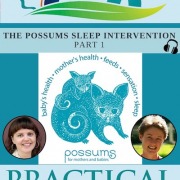How to feed a fussy toddler in five easy steps
Feeding a toddler can be anxiety-provoking, frustrating, stressful and messy! Many a well-meaning parent has become trapped in feelings of guilt or anxiety about what or how much their child eats. Fortunately, feeding our fussy toddlers doesn’t have to be so difficult. Here’s how to feed a healthy toddler in five easy steps:
- Accept that toddlers are naturally fussy eaters. This is much easier to do, I think, when you understand why toddlers are so picky. Fussiness about food is practically a universal stage, appearing at about one just as children become mobile, and settling by about four. It is likely that this fussy stage is protective. Even with a small and picky toddler appetite, many parents find that they have to be vigilant in ensuring their toddler doesn’t swallow something potentially dangerous. Imagine how difficult that would be if toddlers were adventurous with cuisine!
- Understand what your responsibilities are. Many parents become unstuck in feeding their toddler because they take full responsibility for their child’s diet. In fact, your child needs to learn how to regulate their own food intake — to eat when hungry and to stop when full — a simple but important life-long skill! So, it is your child’s responsibility to decide when to eat, how much to eat and exactly what to eat off their plate. Your responsibility, as the parent, is to prepare and serve.
- Serve a variety of healthy, normal food regularly. If you have a healthy diet yourself, then by far the easiest way to do this is to simply offer your child a portion of the same food that you yourself are eating. Remember, whether or not they eat the food is their decision, not yours. Your job is to offer.
- Notice opportunities to boost your child’s nutrition. Notice what foods your child prefers and take this into account, deliberately offering preferred nutritious foods. You can also experiment with preparing toddler-friendly, healthy foods such as fruit smoothies, fruit or vegetable muffins, porridge, vegetable frittatas, natural yogurt, or meals with vegetables unrecognisably cooked into the sauce, e.g. spaghetti bolognase or mild chicken curry. Of course, your unique child may not be tempted by any of these suggestions. If you are stuck for ideas there are plenty of toddler-friendly recipes on the internet. Don’t make this difficult for yourself, though! A relaxed, trial and error approach is needed to find what your toddler enjoys. If you are breastfeeding, then continuing to breastfeed into the toddler years is another easy way to boost your child’s nutrition.
- Be patient. The food fussiness stage can last years, so you need to be patient. Keep offering all of those normal, healthy foods and remember that the day will come when your child actually eats them! If you are still concerned that your child’s nutritional needs are not being met then it is best to seek medical advice from your child’s doctor. Remember, a medical doctor is better equipped to judge if your child is malnourished (vitamin deficiencies can be tested for!). If there is reason for concern then a qualified paediatric dietician can give expert assistance in fine-tuning your toddler’s diet.
Apply it to your life: Try out these five steps with your toddler. Remember, your job is to prepare and serve healthy food. It is your toddler’s responsibility to decide when, how much, and what exactly to eat off their plate.













Leave a Reply
Want to join the discussion?Feel free to contribute!